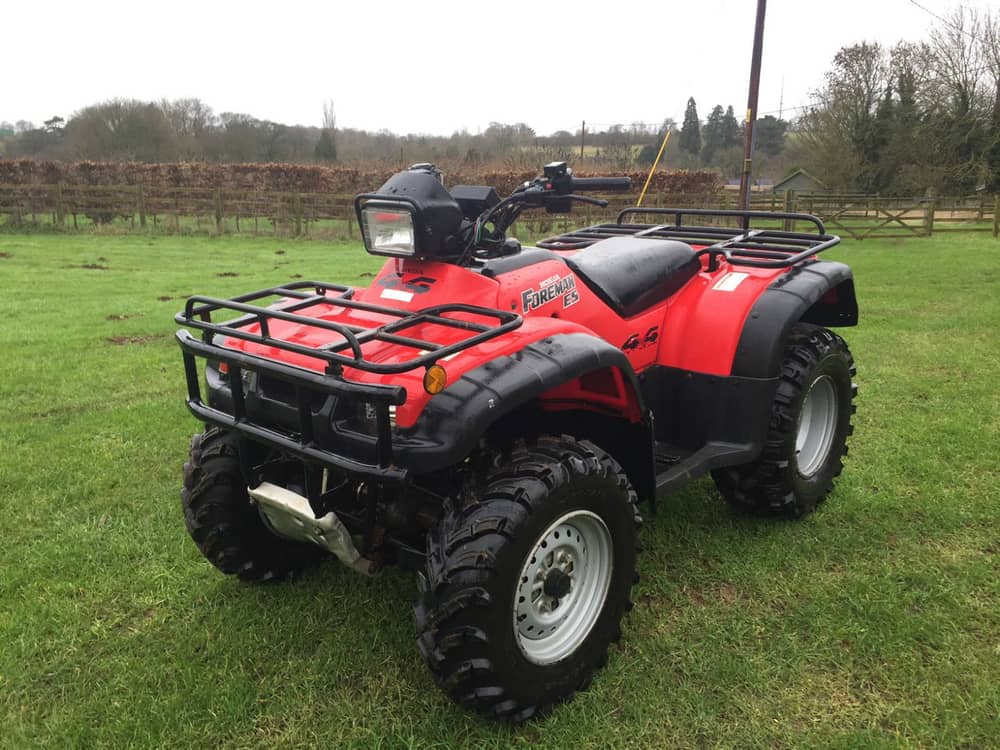Popular all-terrain vehicles like the Honda Foreman 450 ES are renowned for their toughness, adaptability, and off-road prowess. But over time, just like any mechanical equipment, it can have some problems. So, what are Honda Foreman 450 ES shifting problems?
Some Honda Foreman 450 ES customers have mentioned shifting problems as one of their problems. Shifting problems can manifest in many different ways. The ATV may lock up in one gear, struggle to shift, or experience gear slippage or grinding.
These problems can be annoying and impair the car’s overall performance and enjoyment. Finding effective solutions requires an understanding of the root causes of problems that are constantly evolving. Quickly addressing these issues can aid in regaining the Honda Foreman 450 ES’s smooth shifting performance. This guarantees a safe and satisfying riding experience. Let’s discover it right now!
Table of Contents
What Are Honda Foreman 450 ES Shifting Problems?
Numerous shifting issues have been observed with the Honda Foreman 450 ES. Typical problems include:
Difficulty Shifting Gears
Owners have experienced difficulty or a grinding sensation when attempting to shift gears. It may be difficult to smoothly shift between gears as a result.
Slipping Gears
Another issue is when the ATV abruptly shifts out of gear, losing power and control. This could be risky, especially if you’re riding off-road or pulling a lot of weight.
Stuck in a Gear
Some customers complain that they are unable to shift up or down because they have become stuck in a specific gear. As a result, the vehicle’s functionality and maneuverability may be severely hindered.
Electric Shift Failure
The electric shift mechanism used by the Honda Foreman 450 ES is susceptible to difficulties with the electrical parts. It is possible for the shifting process to be interfered with by faulty connections, electrical issues, or a broken shift motor.
Clutch Troubles
Worn-out clutch parts, such as the clutch plates or springs, can cause problems with shifting. Gear shifts may be jerky or insufficient as a result.
How To Fix Honda Foreman 450 ES Shifting Problems?

There may be some troubleshooting and probable repairs needed to fix shifting issues with the Honda Foreman 450 ES. Here are some ideas for dealing with these problems:
Check the Clutch
Start by looking over the clutch’s parts. Check for broken or worn clutch plates. If required, change them. In addition, ensure that the clutch springs are properly tensioned and, if necessary, replace them.
Verify Electrical Connections
Electrical connections that are not working properly can lead to shift issues. Examine the connectors and wiring harness for the electronic shift system. Verify that all connections are strong and corrosion-free. Any broken connectors should be cleaned or changed.
Test the Shift Motor
A bad shift motor could be the cause of an electric shift system that isn’t working properly. To ensure adequate voltage and performance, test the shift motor with a multimeter. Consider replacing it if it is broken.
Adjust the Clutch Cable
Shift problems may be brought on by improper clutch cable adjustment. For guidelines on how to correctly adjust the clutch cable tension, consult your car’s owner’s manual. Check to see if the cable has the appropriate amount of free play.
Change the Transmission Fluid
Transmission fluid that is unclean or outdated may have an effect on shifting performance. The owner’s manual specifies the recommended type and quantity of fluid to replace the old, which should be drained and replenished.
Seek Professional Help
If the shifting issues persist or you are unable to repair them on your own, you should take the ATV to a trained mechanic or a Honda dealership. They are qualified and equipped to recognize and solve complicated shifting issues.
When performing maintenance on your Honda Foreman 450 ES, keep in mind to always put safety first.
Reasons Causes Honda Foreman 450 ES Shifting Problems
The Honda Foreman 450 ES may experience shifting issues for a number of reasons. Here are a few typical reasons:
Worn Clutch Components
Shifting issues might develop as a result of wear and tear on the clutch plates, springs, or other clutch components. The clutch may not engage or disengage smoothly as a result of this.
Faulty Electrical Connections
The electronic shift technology used by the Honda Foreman 450 ES is dependent on strong electrical connections. Loose or corroded connections can disrupt signal transmission, resulting in shifting troubles or the failure of the electric shift system.
Incorrect Clutch Adjustment
If the clutch cable is not properly set, shifting issues may occur as a result of the clutch’s improper operation. The clutch cable’s insufficient or excessive tension can inhibit gear engagement.
Contaminated or Low Transmission Fluid
Shifting problems can be caused by filthy or low transmission fluid, which impedes the smooth operation of the gearbox. A lack of lubrication or the presence of debris might make gear shifts difficult.
Mechanical Damage
Problems with shifting can be brought on by physical damage to the transmission, shift forks, or gears. Gear shifting problems can result from internal component damage brought on by collisions, hard riding, or inappropriate handling.
Improper Riding Technique
Shifting issues might occasionally be the result of rider error. Shifting issues might result from poor clutch engagement, jerky shifting without correct synchronization, or poor gear selection.
Final Thoughts
In conclusion, there are a variety of reasons why the Honda Foreman 450 ES may experience shifting issues. They consist of mechanical damage, poor riding technique, defective electrical connections, wrong clutch adjustment, polluted transmission fluid, and worn clutch components. It is crucial to examine, repair, or replace the pertinent components in order to resolve these problems. For difficult repairs, it could be necessary to seek professional assistance. The Honda Foreman 450 ES will operate at peak performance and reliability with routine maintenance and fast problem-solving.

